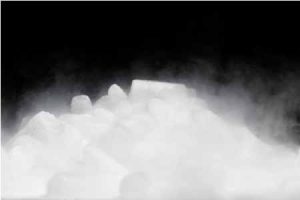 Dry ice is solidified carbon dioxide. When dry ice melts, it turns into carbon dioxide gas. Carbon dioxide gas is always present in the environment, but in low concentrations. It is colorless and odorless.
Dry ice is solidified carbon dioxide. When dry ice melts, it turns into carbon dioxide gas. Carbon dioxide gas is always present in the environment, but in low concentrations. It is colorless and odorless.
However, dry ice can be a very serious hazard in a small space that isn’t well-ventilated. In a small space, this gas can build up. If enough carbon dioxide gas is present, a person can become unconscious, and in some cases, die.
Dry Ice Precautions:
There are several important precautions to take when handling dry ice:
- Dry ice is much colder than regular ice and can burn the skin like frostbite;
- You should wear insulated gloves when handling it;
- Wear safety glasses and a face shield if you are cutting or chipping it;
- Keep dry ice out of the reach of children;
- Never eat or swallow dry ice; and
- Avoid inhaling carbon dioxide gas.
It is very dangerous to use dry ice in a walk-in freezer, cooler, closed truck bed, or other small space with poor ventilation. A large amount of dry ice in a walk-in cooler or freezer can produce a great deal of carbon dioxide, which can possibly be fatal to someone entering that space.
Symptoms of overexposure to carbon dioxide include headache and difficulty breathing, and with greater exposure, nausea, and vomiting.
KNOW THE DANGERS OF HANDLING DRY ICE!!
Download flyer: STOTW_1241_Dry_Ice_Safety Download Spanish flyer: STOTW_1241_Dry_Ice_Safety_esp

